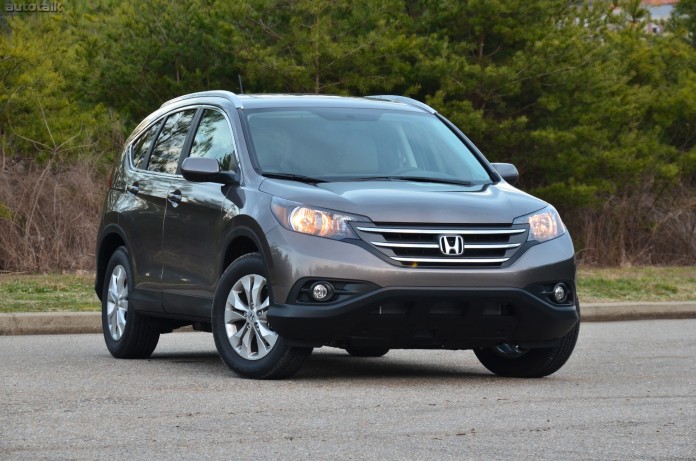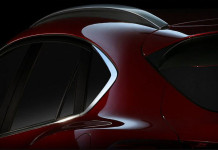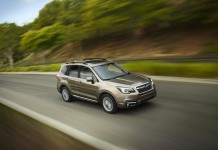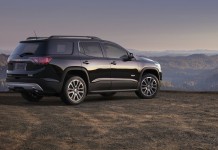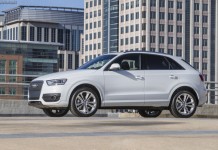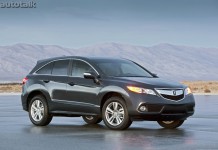Let’s say you own, daily drive and love a Honda Civic but suddenly, your life takes a different direction. Your family suddenly becomes larger than it was when you first purchased your humble little compact and with the growth is a constant want for entertainment using various activities. As much as you admire your Civic, the act of loading children, a dog, soccer equipment, camping tents, and various other things into the little trunk isn’t as enjoyable as you would like, so what do you do? In 1995, customer demand twisted Honda’s arm enough to create such a solution to the problem and its name was the CR-V. Now in its fourth generation, the 2012 model year crossover is still an easy-to-use, efficient and spacious vehicle but unlike its mid 90s counterpart, this year features some of the most competent competitors the compact SUV segment has ever seen. In order to find out if the CR-V can still hold its own and if it’s still a true Honda, we got behind the wheel of an all-new 2012 edition.

For the new model year, Honda cleverly redesigned their bread-and-butter crossover to create the fourth generation. Since the namesake debuted nearly twenty years ago, it didn’t take long for it to become not only one of Honda’s best sellers but one of the best-selling compact SUVs of all time. So in order to not mess up a good thing, the engineers in charge altered just enough bits and pieces to make the 2012 the same but only better. Afterall, most new CR-V owners will be repeat buyers and the last thing an automaker wants to do is upset its loyal customers. For that reason, the fourth generation is ever-so-slightly larger than its predecessor with an overall length of 178.3 inches, a wheelbase of 103.1 inches and a width of 71.6 inches. On the outside, the 2012 certainly looks like a CR-V but goes about its business in a larger, more mature and more car-like manner. Inside, the vehicle’s philosophy of function over form carries over but the gap has been greatly reduced as 2012 brings many CR-V technology firsts. In essence, the new utility has been redone in a similar way that most Honda models change and that is why the company sees so many repeat buyers.


Unfortunately, not every redesign story can be as successful as previous iteration so to properly determine if the CR-V is indeed still a CR-V, we took the reigns of a 2012 EX-L with navigation and all wheel drive. Loaded out as the top-level trim, the EX-L supersedes the lower EX and base LX but comes in three different forms: standard, with rear seat entertainment or with navigation. It may be the most expensive version, but our tester does come with a refreshing party gift: no option packages and thus, it carries one price: $29,795 without destination. For that chunk of change, a buyer gets features such as Real Time All Wheel Drive, dual zone automatic climate control, multi-angle rearview camera, bluetooth device pairing, leather interior, 328-watt stereo with subwoofer, text message readback, satellite radio, Pandora internet radio playback, navigation with voice recognition, real time traffic, remote entry, fog lights and 17 inch wheels. While nearly $30 grand for a compact SUV may seem steep, the amount of stuff you get with the EX-L Nav is truly vast. There should also be comfort knowing that a base, front wheel drive LX will go for just $22,295.




Like previous generations of CR-Vs, the fourth hasn’t received anything truly drastic. Judging the 2012 solely on its looks, it certainly has the ability to offend no one. The basic silhouette is familiar but does appear lower and wider than before. The idea was for the new model to be more aggressive looking as if it wanted to grab apexes more than soccer balls and coolers. With a new grille housed in between slanted head lights and placed right above bold, gun-shot fogs, the CR-V’s new face certainly looks meaner than the previous model. The tall fenders mesh well with tall doors and the sloped rear end looks vaguely similar to the Crosstour in profile view. The rear tail lights still drip from the roof line, a CR-V standard, while multiple cuts and creases give the back-end a sense of fluidity. It may look like a CR-V, but the 2012 model is nowhere near as innovative in its outward appearance as other offerings. This is especially so when bathed in our tester’s Opal Sage Metallic paint which blends in so well, that the Honda can and will get lost in a crowd.

Truth be told, a driver spends more time looking at a vehicle’s interior than its exterior and for 2012, the CR-V receives a plethora of new tricks and features on the inside. Attention was greatly paid to the in-vehicle experience with more options for media controls and a more car-like seating placement. The center console was completely redone and features a “Y” shape so that each switch, knob and button can be easy for both the driver and passenger to reach. Placed perfectly in the center is a five-inch touchscreen that houses the crystal clear navigation and media displays. Around the screen are air vents, a digital information readout and climate controls that seem to have been placed with unseen symmetry. This truly is one of the best dashboards to come out a Honda in long time and rivals almost every other small SUV on the market.





Once you are done being astounded by what the CR-V can do while sitting still, the time for forward motion arrives. Under the hood of all fourth generation models is one engine which is connected to one transmission, even in all wheel drive form. Motivation comes by way of a 2.4 liter inline four cylinder with dual overhead cams and Honda’s world-famous i-Vtec variable valve timing. Very slight improvements were made so that five more horsepower could be had which brings total output to 185 horsepower and 163 lb-ft of torque. Like a true Honda, peak power shows its face in the upper regions of the tachometer at 7,000 rpms. What that means is in order to get everything out of the CR-V, redline must be visited. On the upside, the 2.4 sings a sweet, growling song and the five speed automatic does a good job of dealing with high rpm shifts. If driven like a normal vehicle, the drivetrain never shows a sign of harshness and accompanies the CR-V’s personality just right. Low end torque is an issue however as the 163 lb-ft have difficulty with the nearly 3,500 lb curb weight. And it may be smooth, but only five gears was a little 15 years ago and a sixth speed would benefit the entire vehicle but especially in the economy department. The EPA rates the 2012 AWD at 22 mpg in the city and 30 mpg on the highway. With its sleek and low new body, the CR-V could easily achieve 35 plus mpg on the highway if an extra gear was present.

What the Honda lacks in straight line speed, it makes up when the road turns curvy. Compared to competitors such as the Toyota RAV4 and Nissan Rogue, the CR-V has an oddly sporting feel to it with loads of communication. Turn in is sharp and slicing through corners is actually rewarding; a rarity in the SUV segment. Thanks can be given to the rear suspension which is made up of multi-links instead of a tradition torsion beam. Not only does this allow for more grip, but the compact design gives the 2012 more cargo space to boot. Up front, a MacPherson strut layout ensures strength and stability while our tester’s available all wheel drive made corner exit and entry just that much more manageable. The Honda’s road friendly tires, low body and long overhangs mean that despite power to all four wheels, off-road excursions should be rare and limited. Mainly in place to ensure safety, the all wheel drive system isn’t as stout as the ones found on the rally derived Subaru Forester and Mitsubishi Outlander. Even still, a CR-V driver shouldn’t worry at all if the road turns into a rain-soaked slip-and-slide.

In the past, Honda has proven that it knows what it’s doing when it comes to generation changes. A few slips have come and gone (the 2012 Civic comes to mind) but for the most part, the automaker creates a solid foundation and sticks with it. There is a reason why the Accord has landed on Car and Driver’s 10 Best list for decades and that’s because each change-up isn’t so drastic that the car looses sight on why it was created in the first place. Up until the 2012 model year, the CR-V may have gotten bigger and more sophisticated, but it continued to be inexpensive, reliable and useful: essentially a taller Civic. Now that the fourth generation is upon us, it appears that the same philosophy that created the original vehicle in 1995 is still in play as the new model continues to be reliable, useful, comfortable and well made. Competing in a market that is beyond crowded and succeeding can be difficult, but CR-V is actually doing just that. Honda altered the 2012 model ever so slightly to make it the same as before but simply better. It may have its faults as it’s a little underpowered and a little pricey when loaded, but it manages to carry with it that Honda charm that separates their vehicles from the rest. At the end of the day, the 2012 CR-V is still a staple in the compact SUV diet and shouldn’t be ignored if shopping for a spacious, comfortable, efficient and reliable member of the family.
Photos: © Copyright 2012 Ossamah Shabbir

